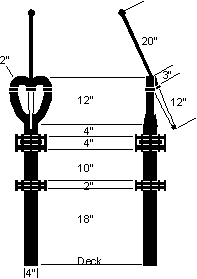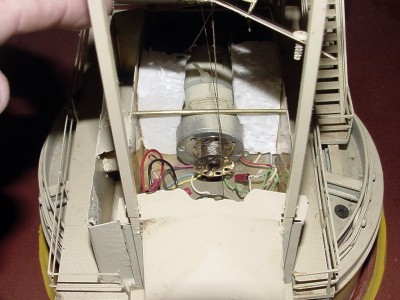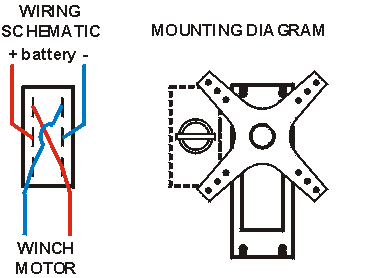|
Building superstructures from acrylic
plastic
I've been working on faster and cheaper ways to scratch
build model boats. One of my most popular methods is the "prefab" windows and
doors technique I developed using clear 1/16" acrylic plastic.
Most clear plastic comes with a film on it to protect it from scratching.
It's important to leave this on till ready to glue structures together. I usually
mask off the plastic over top the film, but sometimes the film keeps coming off. In
that case I remove the film and put masking tape on both sides of the plastic to avoid
scratches. Then I cut out the walls for the cabin superstructure. While I'm
cutting the walls out I mark them to make sure I know which wall goes where.
When all the walls have been cut out I proceed to use a scale ruler and pen to
mark off all my window and door locations making sure everything is square. After marking
off all doors and windows I go back and double check all the locations making sure
everything is correct.
Next I use an x-acto knife with a #11 blade and a metal straight edge to
scribe around the frames of the windows and doors. If the window has a horizontal
or
vertical post I usually scribe a line spaced a little bit apart to each side of the post
line. Then I remove the little strip of tape and when it is painted it created the
center post of the window.
 This photo shows the
windows and door masked and drawn ready for scribing. This photo shows the
windows and door masked and drawn ready for scribing.

Here shows the technique
of masking off a door for the opened effect. If you don't plan on detailing the area
open to the door, then paint the inside of the door opening black. Notice the tape
on the center post of the window cut out.
 Here is the technique of
doing a closed door with windows. Scribe the door and windows then remove the tape
from the door section while leaving the tape over the window part.
Here is the technique of
doing a closed door with windows. Scribe the door and windows then remove the tape
from the door section while leaving the tape over the window part.
 After all doors and
windows are scribed, excess tape removed, it's now time to glue up the structures.
Notice door window taped off on inside. The door opening is masked off as for an opened
door then the window is scribed on the inside and the door is painted from the inside to
imitate a door that opens to the inside.
After all doors and
windows are scribed, excess tape removed, it's now time to glue up the structures.
Notice door window taped off on inside. The door opening is masked off as for an opened
door then the window is scribed on the inside and the door is painted from the inside to
imitate a door that opens to the inside.
 Here's the painted pilot
house. A tip here is when you have a detailed interior, paint the interior color first and
then overlay the exterior coat. This gives you the color for the interior without
the hassle of masking and aligning the windows and doors inside.
Here's the painted pilot
house. A tip here is when you have a detailed interior, paint the interior color first and
then overlay the exterior coat. This gives you the color for the interior without
the hassle of masking and aligning the windows and doors inside.
 Here is the finished
product. Notice the blacked out open door in engine room, The recessed door that appears
to open in, and the opened door on the pilot house. Also check
out the center posts on the windows. Here is the finished
product. Notice the blacked out open door in engine room, The recessed door that appears
to open in, and the opened door on the pilot house. Also check
out the center posts on the windows.
To remove tape adhesive for structure prior
to painting, use
mineral spirits.
It works very well. After the paint has dried and masking tape removed from
windows and doors, I use mineral spirits with Q-tips to remove any adhesive.
Be careful not to rub the paint off around
windows and doors. When painting structures, make sure it's masked off to
keep over spray from getting on the inside of the window and door
openings. Of course you don't have to worry about that if you have blacked
them out.
Building a fleet deck with acrylic
plastic
 Take a piece of
clear plastic and scribe the size of the deck. Don't cut it out yet to make it
easier to scribe the grid lines. Carefully scribe lines approximately one scale inch
apart across the deck layout. Now scribe across those lines with lines approximately
three scale inches apart. After all lines are scribed go ahead and cut the deck
out. Brush on some enamel paint, being sure to get it down in the scribe lines and
then use a rag with a little mineral spirits to remove the excess, leaving the paint down
in the lines. TIP: Be sure when making the fleet deck to have the three inch lines running
parallel to the pilot house. Reason being, on the prototype they can see down
through the deck. When the long line run horizonal to the pilot house, they can't
see through the deck. It appears as a solid deck. See examples below on prototypes. Take a piece of
clear plastic and scribe the size of the deck. Don't cut it out yet to make it
easier to scribe the grid lines. Carefully scribe lines approximately one scale inch
apart across the deck layout. Now scribe across those lines with lines approximately
three scale inches apart. After all lines are scribed go ahead and cut the deck
out. Brush on some enamel paint, being sure to get it down in the scribe lines and
then use a rag with a little mineral spirits to remove the excess, leaving the paint down
in the lines. TIP: Be sure when making the fleet deck to have the three inch lines running
parallel to the pilot house. Reason being, on the prototype they can see down
through the deck. When the long line run horizonal to the pilot house, they can't
see through the deck. It appears as a solid deck. See examples below on prototypes.
 View of mv. C.D. Wilson's fleet
deck
View of mv. C.D. Wilson's fleet
deck
 A fleet deck built the wrong way.
Notice how the grid work looks like a solid deck
A fleet deck built the wrong way.
Notice how the grid work looks like a solid deck
Making handrail mesh
Make handrail mesh from nylon screen for doors. Just cut in
lengths with the holes making a diamond shape, paint and glue in place. The same can be
done for smaller scales using pantyhose. Photos below show how easy it is to do.




Note; Pantyhose
is also good for making screen doors.
Tips for working with plastic
When heat forming plastic, adjust the oven between
200 & 350 degrees
To remove scratches from plastic use a muslin buff
with a diamond or plastic compound. Be careful not to cause heat build up.
To smooth edges use a file then scrape with a flat
edge of steel. A hacksaw blade is useful.
To simulate rusted metal. Paint with light
earth and add Tuscan in places. Streak the paint with a brush and thinner. Next
rub in some dirt and spot some places with thinner.
How
about a fire monitor? If you tow barges with flammable
cargo
you need to have a fire monitor for emergencies. With some brass or copper tubing and some
careful soldering, the fire monitor could be made operational. Most fire monitors are
mounted next to the pilot house for fast access though I have seen some mounted in the
middle of the fleet deck. The photo here shows the 4" supply pipe elbows into the
cabin just below the deck. Some, as in the fleet deck arrangement, run straight down
through the main deck.


Operating crane
 I have been
asked, "How do I make the boom and tackle operate on
the crane?" It's really a simple technique. I use a 24
rpm geared motor for the winch with a sewing
machine bobbin epoxied to the shaft for the cable drum. It takes
one unit for the boom and one for the tackle. I have been
asked, "How do I make the boom and tackle operate on
the crane?" It's really a simple technique. I use a 24
rpm geared motor for the winch with a sewing
machine bobbin epoxied to the shaft for the cable drum. It takes
one unit for the boom and one for the tackle.
In the photo
you see the tackle winch. Barely visible is the winch drum for the boom. The
winch motor is nestled in the cabin area at bottom of screen.  This diagram shows how the switch is wired and tripped with a servo. Use a
double pole, double throw, momentary on,
center off switch. You need a momentary on so when the servo is released
the switch will return to it's center off position. Use an "X" arm on
the servo centered with the switch so that when you throw the joystick in one
direction it will trip the switch and when you throw the joystick in the
opposite direction it will trip the switch the other direction. With the switch
wired in an "X" on the outer poles it will reverse the motor when the
switch is pushed the opposite direction.
This diagram shows how the switch is wired and tripped with a servo. Use a
double pole, double throw, momentary on,
center off switch. You need a momentary on so when the servo is released
the switch will return to it's center off position. Use an "X" arm on
the servo centered with the switch so that when you throw the joystick in one
direction it will trip the switch and when you throw the joystick in the
opposite direction it will trip the switch the other direction. With the switch
wired in an "X" on the outer poles it will reverse the motor when the
switch is pushed the opposite direction.
This
is all you'll need with an "A" frame type crane. With other type
cranes, you'll need a motor to turn the crane cab. For that you'll need a geared
motor that turns about 1 to 5 rpm. | 